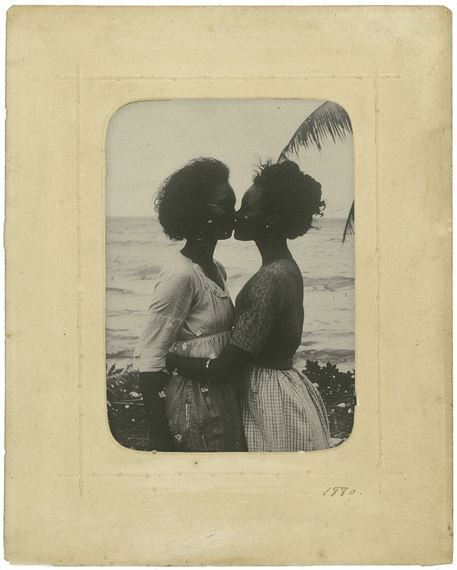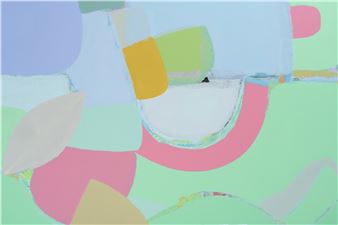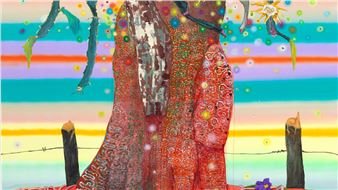The LGBTQIA+ Histories
MASP closes the year dedicated to Queer Histories with a group exhibition that will occupy three of the museum’s exhibition spaces. The LGBTQIA+ Histories exhibition brings together more than 150 national and international works and documents, demonstrating the diversity of LGBTQIA+ production and narrative, especially after the HIV/AIDS crisis of the 1990s.
Curated by Adriano Pedrosa, Artistic Director, MASP; Julia Bryan-Wilson, Assistant Curator of Modern and Contemporary Art, MASP; AndrГ© Mesquita, Curator, MASP; Leandro Muniz, Assistant Curator, MASP, and Teo Teotonio, Curatorial Assistant, MASP, the exhibition is divided into eight sections: Love and Desire; Icons and Muses; Spaces and Territories; Ecosexualities and Transcendental Fantasies; Sacred and Profane; Abstractions; Archives; and Cuir Library.
“The current global landscape for queer and trans people is uneven: acceptance, solidarity and visibility exist side by side with hatred, censorship and outright legal prohibition in different parts of the world. So, on the one hand, greater attention to lesbian, gay, bisexual, transgender, queer, intersex, asexual and other minority (LGBTQIA+) issues is creating more opportunities for queer and trans artists and thinkers. On the other hand, LGBTQIA+ people around the world – affected differently by their race, class, gender, age, and nationality – continue to face oppression. In this context, LGBTQIA+ Histories brings together works that thematize queer topics or are made by LGBTQIA+ artists, activists, and researchers. The show celebrates the richness and multiplicity of queer creativity in the visual arts,” say Julia Bryan-Wilson, Assistant Curator of Modern and Contemporary Art, MASP, and Adriano Pedrosa, Artistic Director. Queer, in the English language, originally meant “strange,” but at some point, it also meant “sexually deviant.” Since the end of the 20th century, however, it has been reclaimed by lesbians, gays, bisexuals and transgender people as a broad term to identify themselves.

Recommended for you
MASP closes the year dedicated to Queer Histories with a group exhibition that will occupy three of the museum’s exhibition spaces. The LGBTQIA+ Histories exhibition brings together more than 150 national and international works and documents, demonstrating the diversity of LGBTQIA+ production and narrative, especially after the HIV/AIDS crisis of the 1990s.
Curated by Adriano Pedrosa, Artistic Director, MASP; Julia Bryan-Wilson, Assistant Curator of Modern and Contemporary Art, MASP; AndrГ© Mesquita, Curator, MASP; Leandro Muniz, Assistant Curator, MASP, and Teo Teotonio, Curatorial Assistant, MASP, the exhibition is divided into eight sections: Love and Desire; Icons and Muses; Spaces and Territories; Ecosexualities and Transcendental Fantasies; Sacred and Profane; Abstractions; Archives; and Cuir Library.
“The current global landscape for queer and trans people is uneven: acceptance, solidarity and visibility exist side by side with hatred, censorship and outright legal prohibition in different parts of the world. So, on the one hand, greater attention to lesbian, gay, bisexual, transgender, queer, intersex, asexual and other minority (LGBTQIA+) issues is creating more opportunities for queer and trans artists and thinkers. On the other hand, LGBTQIA+ people around the world – affected differently by their race, class, gender, age, and nationality – continue to face oppression. In this context, LGBTQIA+ Histories brings together works that thematize queer topics or are made by LGBTQIA+ artists, activists, and researchers. The show celebrates the richness and multiplicity of queer creativity in the visual arts,” say Julia Bryan-Wilson, Assistant Curator of Modern and Contemporary Art, MASP, and Adriano Pedrosa, Artistic Director. Queer, in the English language, originally meant “strange,” but at some point, it also meant “sexually deviant.” Since the end of the 20th century, however, it has been reclaimed by lesbians, gays, bisexuals and transgender people as a broad term to identify themselves.

 ARTISTS
ARTISTS















